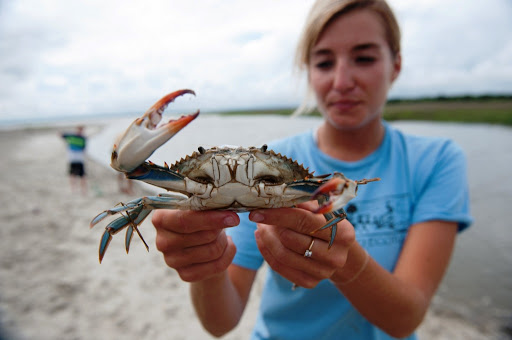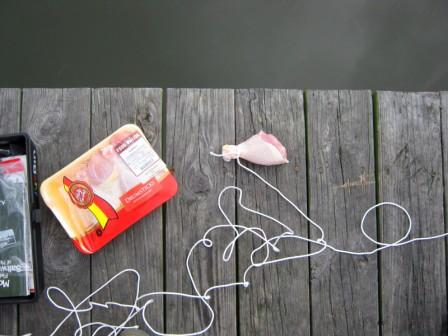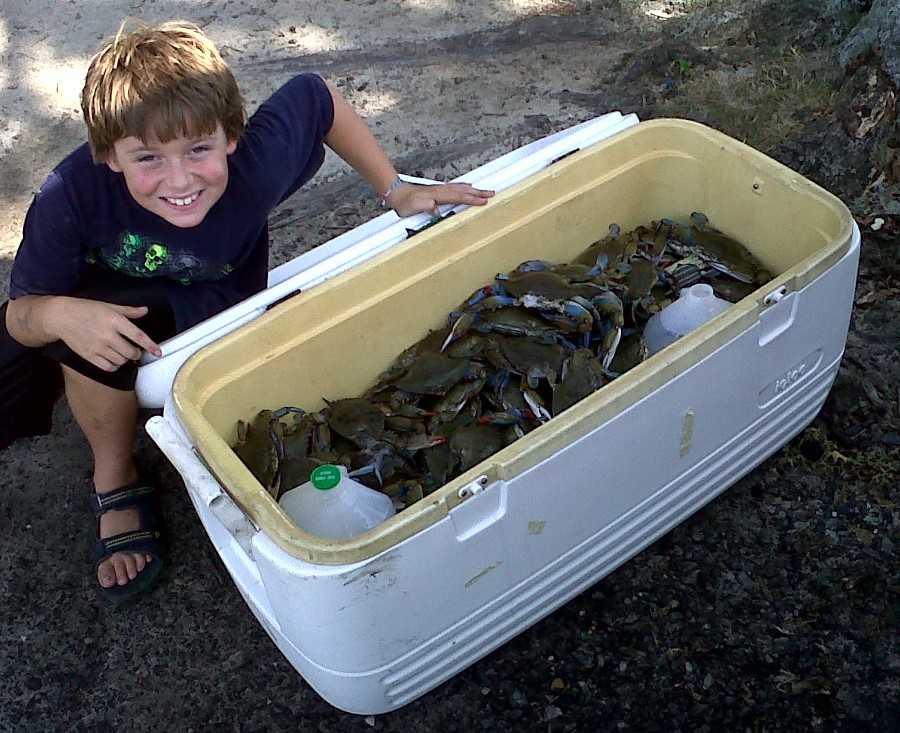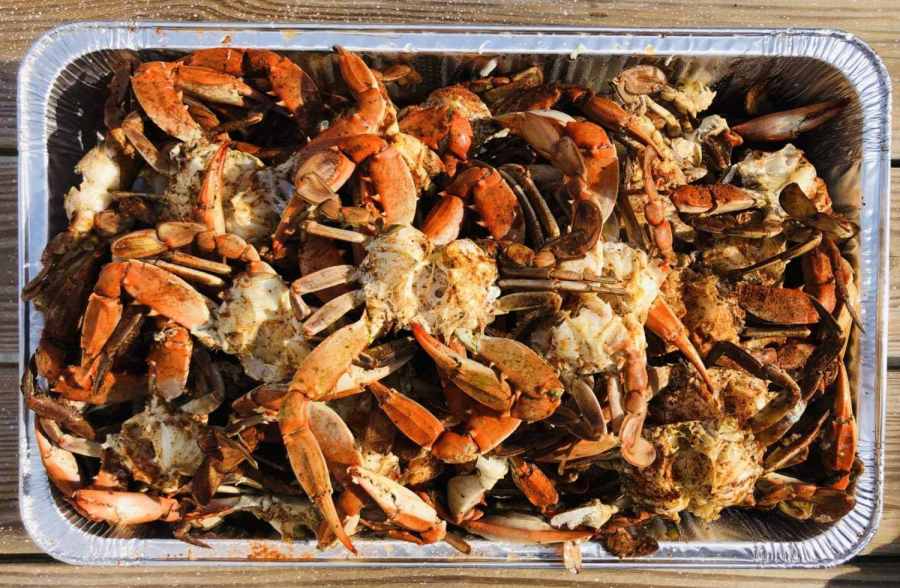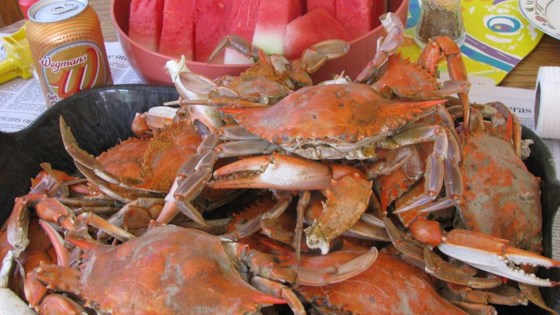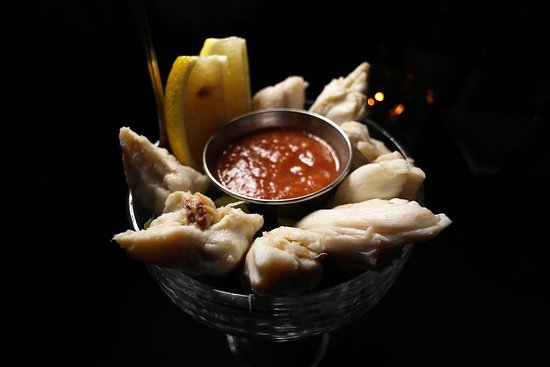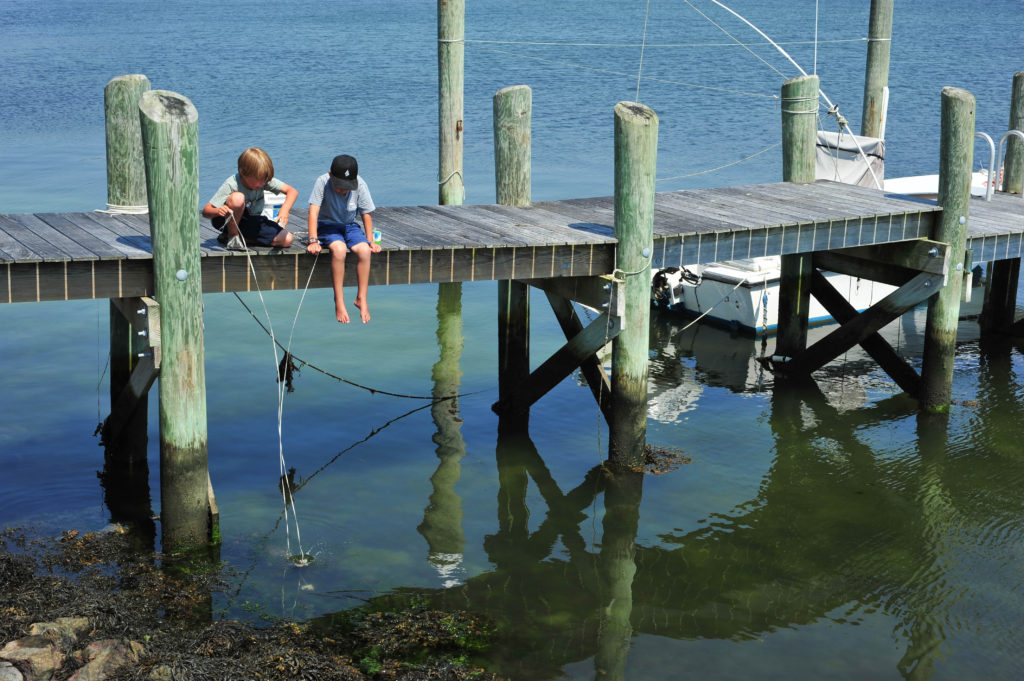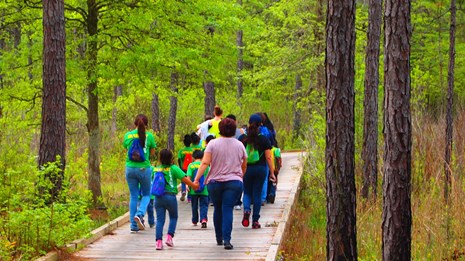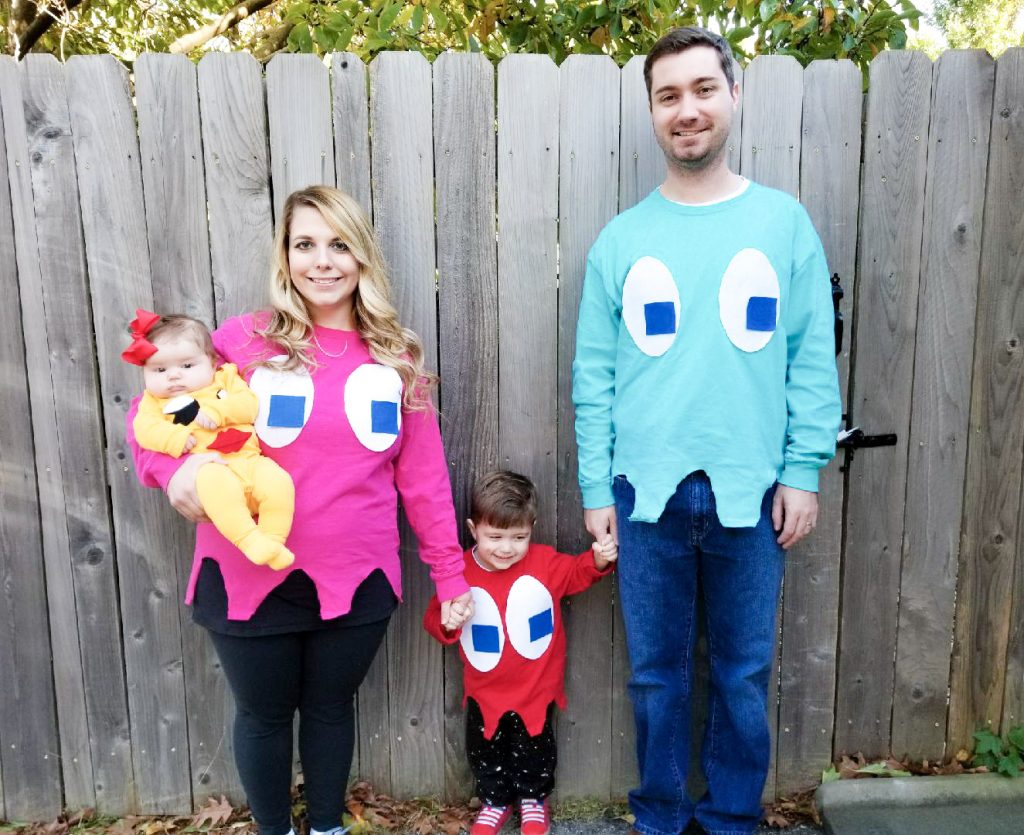Southeast Texas Family in the Outdoors
Introduction to Crabbing
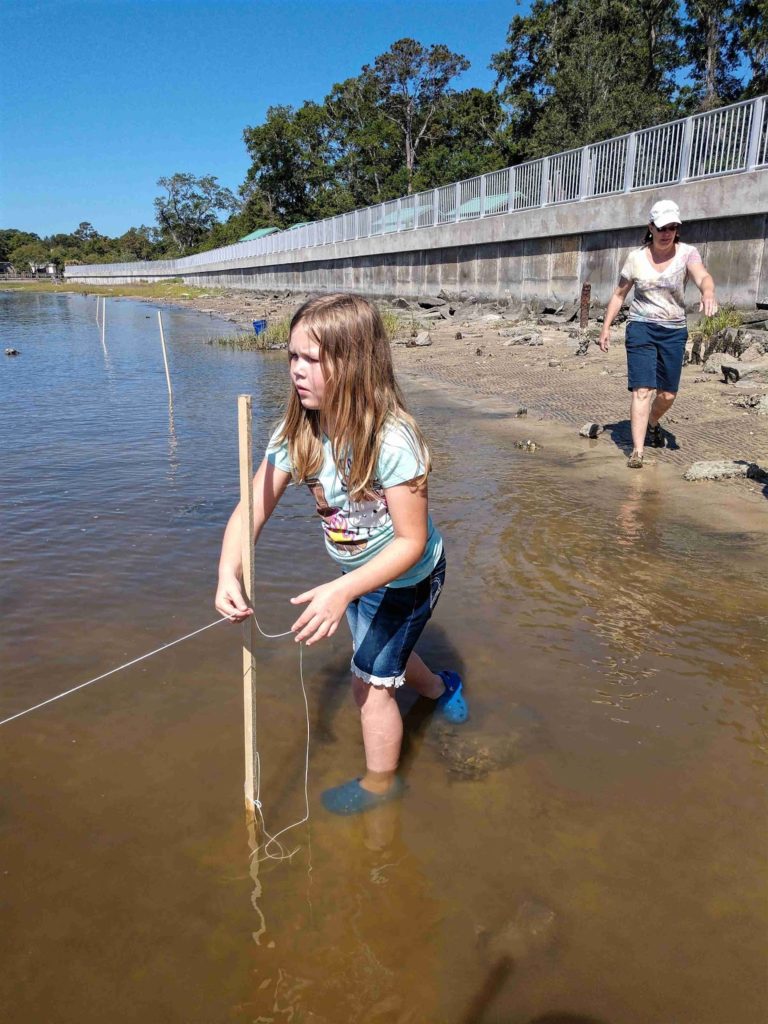 For many families, a love for crabbing is passed down from generation to generation.
For many families, a love for crabbing is passed down from generation to generation.
It can be enjoyed year round, does not require any expensive equipment, and offers fun for all ages.
Best of all, when you are finished you can make a meal (or meals) that your family will enjoy and remember.
What do you need to start catching crabs?
- 80 pound mono fishing line or waxed twine (like you’d use for trotlines). Either is available at Academy or Walmart. You can get the twine at most hardware stores.
- A weight. I see a lot of people using heavy rocks, but you just need enough to keep the line down in a few inches to a few feet of water. You can use a fishing weight, railroad spike, spark plug, or get creative.
- Bait. Chicken necks are the “go to” bait, but if you are fishing as well you can use fish heads after you clean your catch. You can also throw a castnet for mullet and use them.
Tie the weight to the line. 6’ is plenty for most places you’ll crab here. You can make it longer if you are crabbing from a high dock or in deeper water. Tie the chicken (or preferred bait) below the weight.
If you are holding the lines, you will feel a pecking or steady weight when the crab is working on the chicken. Gently pull him towards you. Scoop into net. Dump into a cooler with ice or water (or both). Sometimes the crab will hold onto your net. Just shake him until he falls into the cooler. I start gently and then get a little more vigorous if required.
If they are in cool water, your crabs will stay alive all day.
Getting Ready to cook
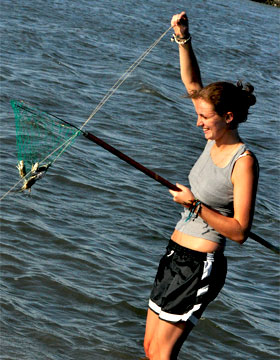 Some people boil whole crabs alive. It’s the fast and easy way to go, but to me it leaves your guests with a dirtier crab when it is time to eat.
Some people boil whole crabs alive. It’s the fast and easy way to go, but to me it leaves your guests with a dirtier crab when it is time to eat.
My Uncle Bob taught us to clean the crabs when they were still alive. It is a little more work, but your family will enjoy clean, beautiful crabs and have less work to do when dining.
I’ll give you an introduction to the process, but you might want to watch YouTube as well. You grab the crab by his right claw and right side legs, so he can’t pinch you. “Pop” the carapace (the large shell on top off). This will kill the crab and let you scoop out the entrails. Pull the eyes and antennae off. Throw the good part back in the cooler or a bucket of cool water.
Once you’ve practiced a few times, it only takes 15 to 30 seconds or so per crab.
Rinse, and you are ready to drop them in your crab boil.
The Crab Boil
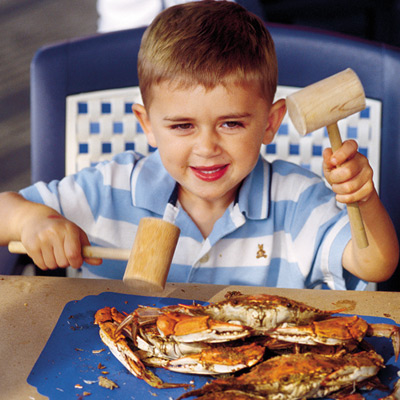 There are lots of great crab recipes, but most begin with having boiled crab.
There are lots of great crab recipes, but most begin with having boiled crab.
A crab boil, much like a crawfish boil, is also a wonderful social event for friends and family.
Like the sport of catching crabs, cooking crabs is inexpensive.
- Large pot
- Crab boil (available at local Brookshire Brothers, Market Basket, Kroger, or Wal-mart)
You can add the same things to your crab boil that you do to a crawfish boil – corn, potatoes, onions, mushrooms.
To me, a crab boil is an event unto itself, so we usually just boil the crabs.
Enjoying Your Crab Feast
Cracking crab is a wonderful experience to share with friends and family.
You can break apart the claws with a wooden mallet or the same handheld nutcracker you use for pecans.
Dip the crab in garlic butter or homemade cocktail sauce and enjoy.
Most of the crab is in the body portions around the legs (twist and pull the legs and the meat will come out) and the claws.
Additional Recipe Ideas
If you have additional crab after your family feast, save it for one of these delicious entrees.
Do you already make chicken and sausage gumbo? Try mixing it up by replacing the chicken and gumbo with crab or crab and shrimp. You’ll LOVE it.
We hope this introduction to crabbing inspires your family to get out and enjoy this fun hobby.
Crabbing makes for great outings, meals, and memories.
Texas Regulations
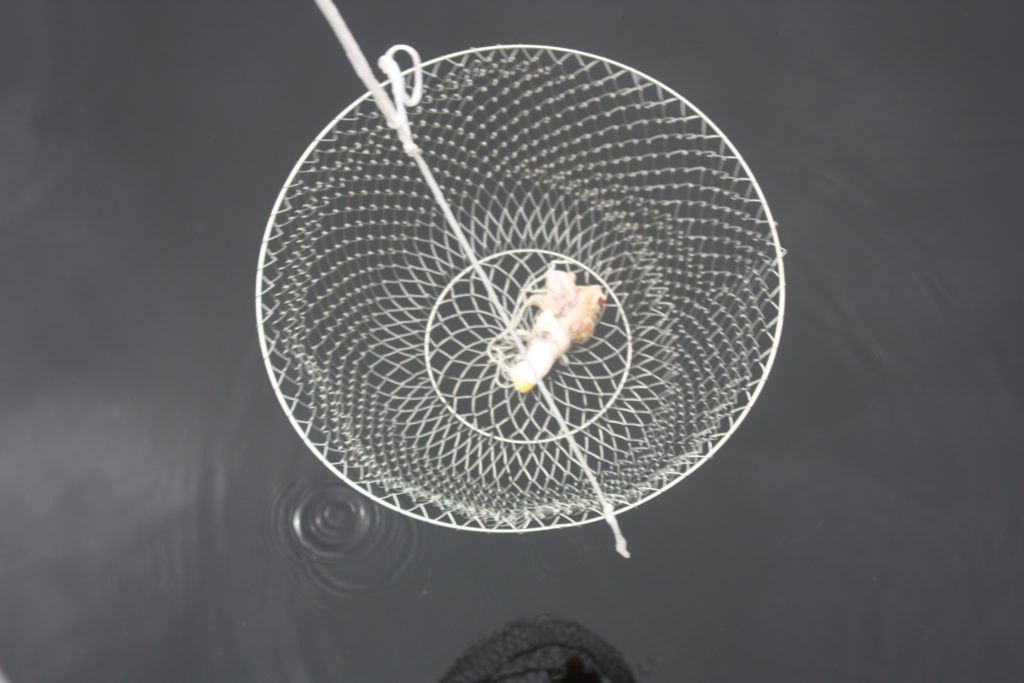 You can find the most current regulations online at TPWD.com, but here are the highlights.
You can find the most current regulations online at TPWD.com, but here are the highlights.
- 5 inch minimum width measure from far spine to far spine. You will see other people keeping smaller crabs, but it is not worth it. Small crabs don’t have enough meat to mess with. Throwing the small crabs back helps ensure larger crabs on your next trip. No one wants to be fined from a game warden. They have good memories, so once you are on their radar, they are likely to check you regularly.
- No limit to how many you keep. The real question is how many do you want to clean? A dozen per adult and six per child is usually plenty.
- Don’t keep females if they have eggs (you’ll know – a yellow / orange sponge on their underside).
Try it and you’ll see why crabbing is a popular family activity in Southeast Texas and Southwest Louisiana.
Here are some ideas for how you can enjoy crabbing:
- Crabbing makes a fun date activity. Take a cooler with some drinks and snacks and make a day of it.
- Looking for family reunion ideas? Get everyone together for a day of crabbing. When the sun starts to go down, fire up the propane burner and enjoy a family crab boil.
- Are your kids… outgrowing you? Invite their friends to come with you.
- Does your family fish together with mixed success? Adding crabbing to the mix gives you a chance to always bring home dinner.
- Is your church youth group, senior group, or congregation looking for a “different” outing? Talk with them about a crabbing adventures.
We hope today’s insight on the hobby of crabbing has been helpful for you.
Stay tuned for more ideas and inspiration for moms and kids courtesy of the Southeast Texas Family Magazine on SETXFamily.com.

